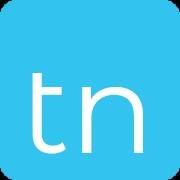-
Posts
123 -
Joined
-
Last visited
Content Type
Profiles
Forums
Downloads
Everything posted by ThaiNotes
-

Thailand Bank - Stock Exchange Access
ThaiNotes replied to FarAway's topic in Jobs, Economy, Banking, Business, Investments
According to your link you have to have Permanent Residence to do that - a non-starter for most foreigners living here. -

Thailand Bank - Stock Exchange Access
ThaiNotes replied to FarAway's topic in Jobs, Economy, Banking, Business, Investments
True. But you're ignoring the fact that the fund fees are typically for an institutional class, so are less than a normal retail investor would pay. Plus you don't have FX charges and inconvenience to worry about if your wealth is in THB (as the OP's is). FIFs are not perfect, but then they're not disastrous, either. For some people they're the right solution. -

Thailand Bank - Stock Exchange Access
ThaiNotes replied to FarAway's topic in Jobs, Economy, Banking, Business, Investments
The banks' asset management companies typically only offer their own mutual funds. If you use a full service broker you have access to the funds of around 19 different asset management companies in Thailand, including their FIFs. Offshore brokers are pretty terrible for funds. Interactive Brokers has offshore funds, but I'm not eligible to purchase any of them. (I'm not American.) Swissquote has a fairly wide range, around 20,000 funds, but the fees are high and the individual funds are not particularly attractive, and few are GBP-denominated (my preferred currency). Saxo Singapore offers only around 500 funds. -

Thailand Bank - Stock Exchange Access
ThaiNotes replied to FarAway's topic in Jobs, Economy, Banking, Business, Investments
Check what the OP wrote. -

Thailand Bank - Stock Exchange Access
ThaiNotes replied to FarAway's topic in Jobs, Economy, Banking, Business, Investments
I suspect there would be issues funding an account and making withdrawals. They don't accept THB. -

Thailand Bank - Stock Exchange Access
ThaiNotes replied to FarAway's topic in Jobs, Economy, Banking, Business, Investments
One doesn't buy stocks through a bank - one does it through a stockbroker, so no. However, there are several Thai stockbrokers that support international trading. Perhaps the most foreigner-friendly is Phillips POEMS. It does cover NASDAQ. https://www.poems.in.th/service_detail.aspx?id=378&Markets We Offer Don't expect it to be anything like as cheap as you can get in the US. -
https://thai-notes.com/dictionaries/abbreviations.html
-
Paying 0.35% for platform fees in the UK is a mug's game. Interactive Investor charges a flat GBP 200/year for a general trading account. If you're Thailand resident, IBKR will open your account in the US, not Luxembourg. If you're not American, buying mutual funds on IBKR is a non-starter. Very limited range available, and requiring a lot of additional paperwork. Tax on dividends is generally not reclaimable - it's implemented as a withholding tax. You won't get back the 30% (or 15%, depending on tax agreements) withheld by Uncle Sam.
-
Thank you for your really helpful and informative reply. However, in future, if you've got nothing to add, please stop wasting electrons - their supply, after all, is finite, unlike the supply of human stupidity.
-
What does that actually mean? Each trade has two sides. Will the buyer and seller both pay 0.1%? Will each pay 0.05%? Or will one side pay 0.1% and the other nothing? (With the London Stock Exchange it's only the seller that pays 0.5% tax on each trade. 0.5% makes Thailand's 0.1% seem reasonable.) Anyway, clear as mud.
-
The priority lane is about 90 metres from the entrance to one of the Immigration halls. The signage now clearly states it's available to Business Class and First Class passengers. When I used it, there were 5 desk open, each with a queue of about 20 people. Some of the queues stalled with individuals who had problems problems. Not an ideal situation. I possibly would have been better off not using the priority lane, but I still got through quite some time before my luggage arrived at the belt.
-
No need. I already have a Masters degree in linguistics. However, I have a question for you: why do you assume that the language group originated in Bengal, when its members are used in Bihar, Nepal, Assam, Arunchal Pradesh, Nagaland, Bangladesh as well as Bengal and elsewhere? And wherever the language originated, it's perfectly possible for one language to displace others. For example, the peoples of South America didn't originally speak Spanish or Portuguese. The fact that the Rohingya speak a language related to Bengali says nothing about where they're from.
-
There is a large group of languages which are closely related, including Assamese, Bengali, Bishnupriya, Manipuri, Chakma, Chittagonian, Hajong, Rangpuri, Kamtapuri, Rajbongshi, Noakhalian, Rohingya, Surjapuri, Sylheti, Tanchangya - all spoken in that part of the world. To assert that the Rohingya are Bengali just because they speak a language in the same family is ridiculous. It's as ridiculous as suggesting that Spaniards are really Italian because their languages are similar, or that the English are really German because their language evolved from North Sea Germanic (Ingvaeonic).
-
The Flashcard app on my site has four decks of flashcards covering 53 different family relationships. For each deck you can list the contents, so you don't actually need to use the flashcards. https://thai-notes.com/games/flashcardindex.html
-
Yes, it's my site. The Thai Typing Trainer isn't any fun, but it is used by at least one International School in Bangkok to teach students. The instructions are all in English. Not sure if that would be a problem for the OP's child. https://thai-notes.com/typing/typingtrainer.html The Typing Game (vaguely inspired by the old arcade game Space Invaders) has no instructions, but introduces characters in the same sequence as the Typing Trainer. https://thai-notes.com/typing/typinggame.html
-

do you say these words like they are high tone or rising tone?
ThaiNotes replied to BananaBandit's topic in Thai Language
I suspect the confusion is over the use of the term "high tone". High tone used to be that, and the charts showing the profiles of tones show it as that. That is now wrong, and high tone has evolved to become mid-rising. According to Teeranon & Rungrojsuwan (2009): "The Thai high tone was found to have changed its height and shape between the years 1911 and 2006 (Bradley 1911; Abramson 1962; Tumtavitikul 1992; Morén and Zsiga 2006). The tone changed its shape from mid falling (1911) to high level (1962), and then to mid rising (2006)." http://www.manusya.journals.chula.ac.th/files/essay/Phanintra_p.34-44.pdf -
นาย /naay/ is more formal than คุณ /khun/ and is only used with men. (/khun/ is ambisexual.) The female equivalent is นาง /naaŋ/ for married women, and นางสาว /naaŋˑsǎaw/ for unmarried women.
-
It means that definitions from sources other than the Thai Dictionary Project (primarily LEXiTRON) which match the search term are not shown. (To be honest, I wanted to show only entries from Haas, but that's not possible. If a word is missing in Haas, but present in LEXiTRON you'll get the LEXiTRON definition.) No. It means that the work exists, but a definition hasn't been written (and quite possibly never will be).
-
Thanks for that. My other dictionary apps do (sort of) behave like that - though showing the definition results to the right, not below. The issue for me has become that now roughly 50% of users don't use desktops, so screen space for them is severely limited. I'm hoping that the new way of doing things, with the search results on a separate page from the search is a reasonable trade off, even if the extra "Back" click can be redundant.
-
Perhaps the best Thai-English dictionaries is the Thai Learner’s Dictionary by Mary Haas. It may be old (first published in 1964), but as far as I know it’s the only once which: - provides classifiers for every noun - uses standard transcription - shows syllable stress - gets the correct tone for unstressed syllables* and - shows etymology. Unfortunately, it’s rather expensive. Its content is available online at the SEAlang website, but the version there is intended more as a research tool and the interface is rather daunting. In the hope of making the online dictionary more accessible, I’ve developed a simple-to-use front end with an online keyboard and drop down list of words which match what you’ve entered of the term so far. I’ve also slightly tweaked the fonts to ensure they work properly. The new front end is available at: https://thai-notes.com/dictionaries/haas.html (Unlike some older parts of my site, this works well on most mobile devices.) It’d be nice to hear what you think. * Correct here meaning “the standard pronunciation used by educated speakers in Bangkok”. So, for example, สบายis transcribed as /saˈbaay/ - the unwritten /a/ is mid tone. Contrast with Benjawan Poomsan Becker, which has /sà-baai/, and LEXiTRON, which has /sàˑbaay/. Similarly, unstressed, written /a/ has the correct tone, for example, สะพาน /saˈpʰaan/, (BPW and LEXiTRON, both have sàˑphaan).
-
They never did. They're on Facebook, so that would work better, too. https://www.facebook.com/SumaaThailanguage/
-
Just wondering what resources American diplomats now use to learn the Thai language before coming here. In the past they used the FSI Thai Language Course, but that dates from 1970 or thereabouts. Is there something a bit more ทันสมัย?





